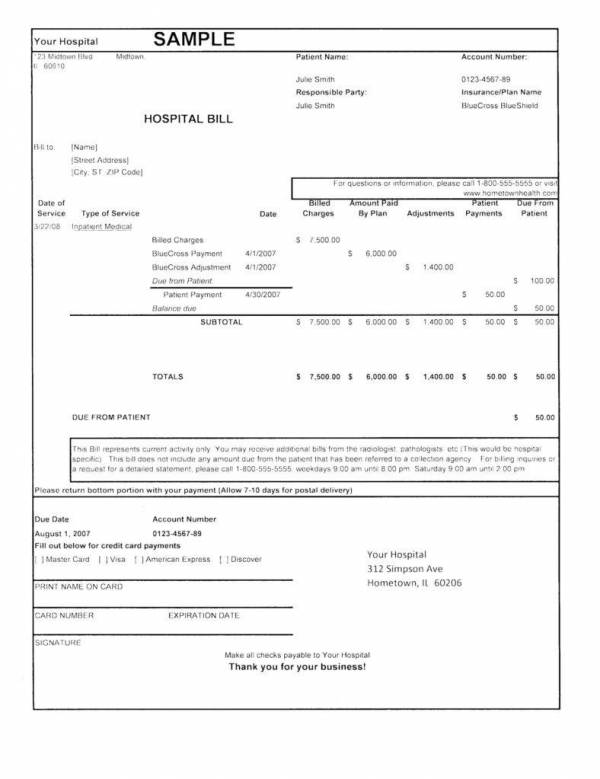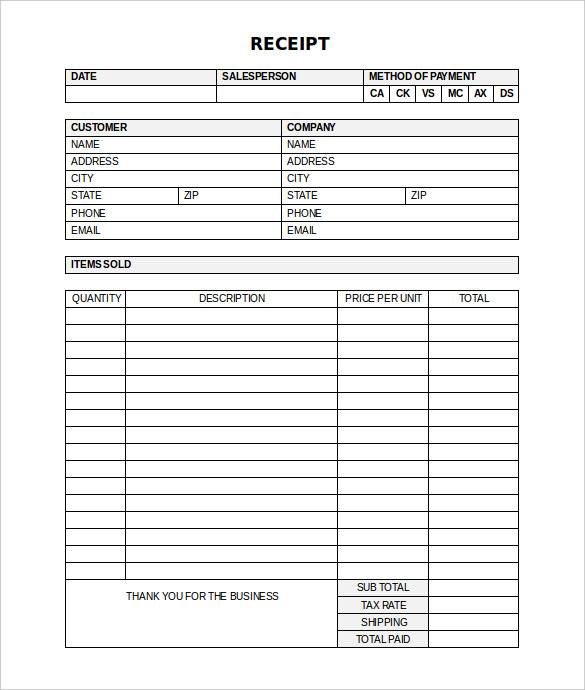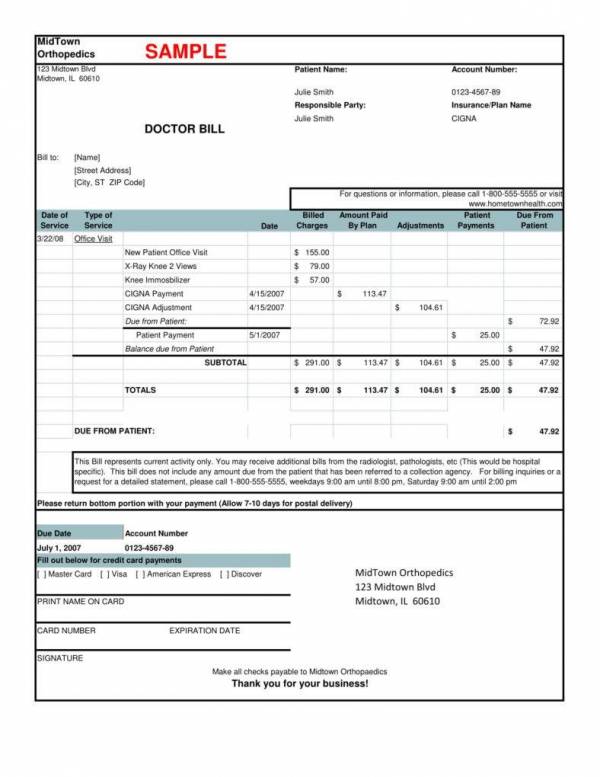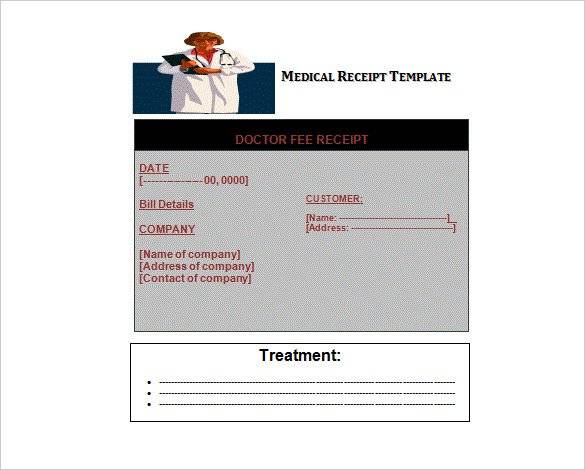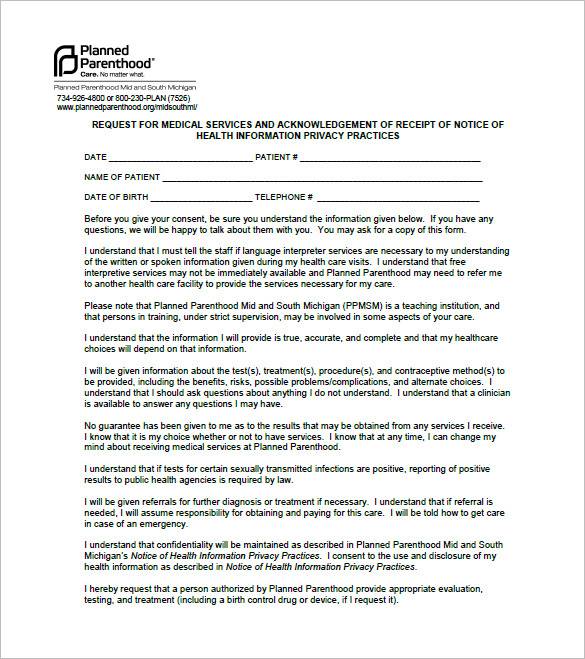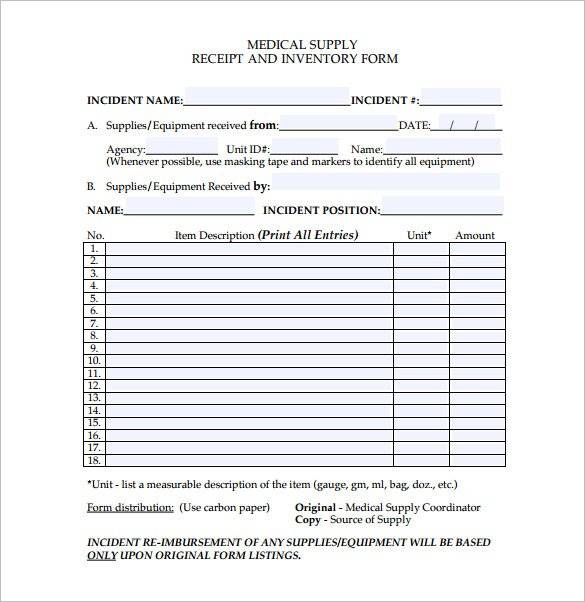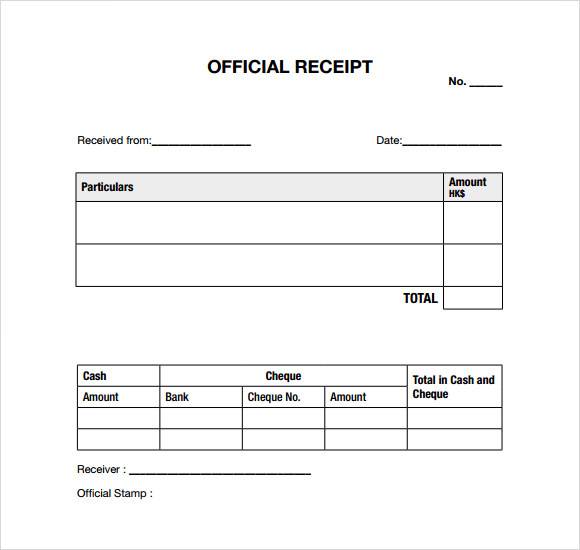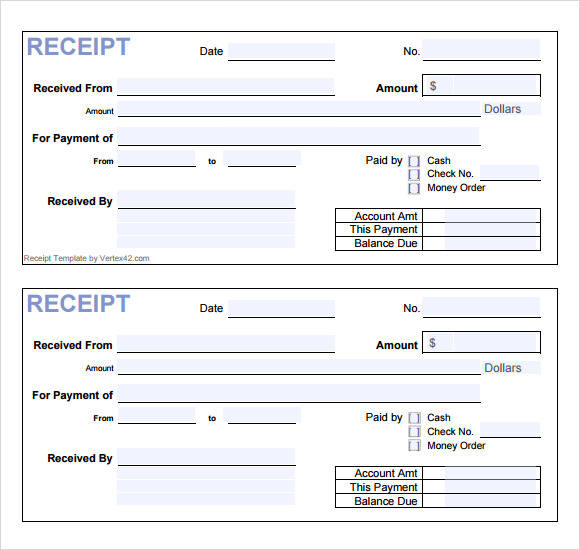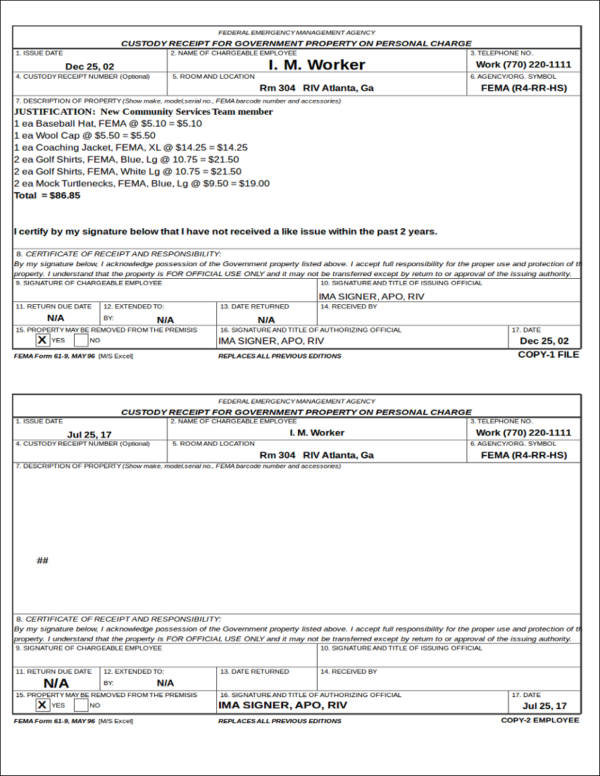Sample Receipts come in many different types and formats. There are receipts that can be used as a general receipt for almost anything and there are also receipts that are created and formatted specifically for use in a specific industry or business. A medical bill receipt belongs to this specific type of receipt.
Featured in this article are medical bill receipt templates that can viewed and downloaded either for personal use or for reference. We will find out what a medical bill receipt is, what it is used on and other related topics. You can check them all out below.
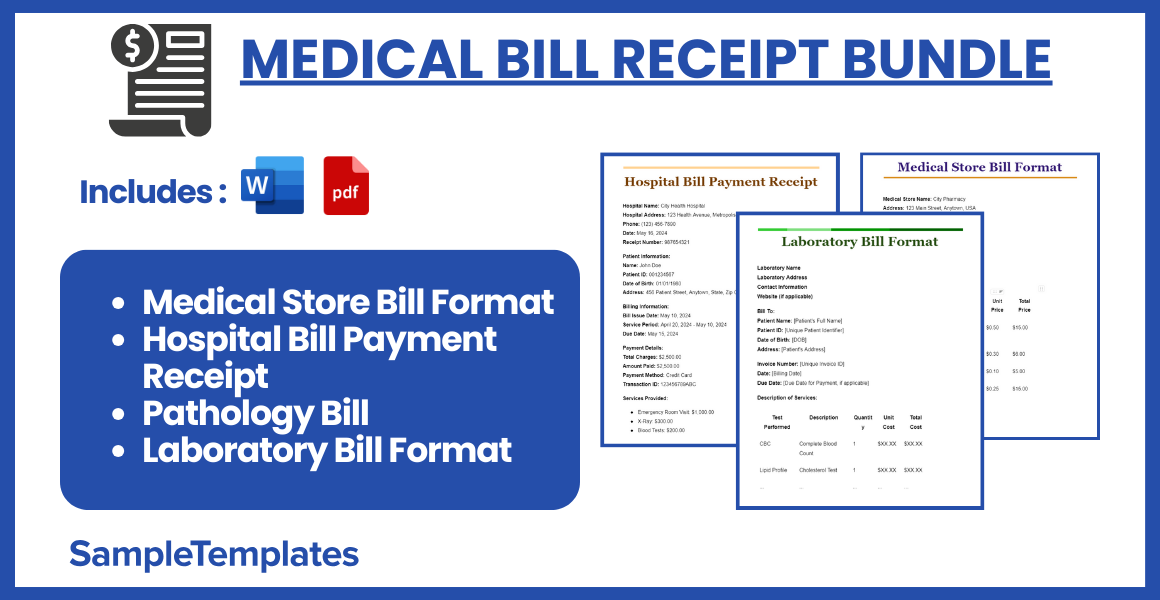
Download Medical Bill Receipt Bundle
Medical Store Bill Format
Medical Store Name: City Pharmacy
Address: 123 Main Street, Anytown, USA
Phone: (123) 456-7890
Date: May 16, 2024
Time: 3:45 PM
Receipt No.: 987654
Patient Name: John Doe
Patient ID: JD4561237890
Cashier: Jane Smith
| Item No. | Description | Quantity | Unit Price | Total Price |
|---|---|---|---|---|
| 1 | Amoxicillin 500mg | 30 capsules | $0.50 | $15.00 |
| 2 | Cetirizine 10mg | 20 tablets | $0.30 | $6.00 |
| 3 | Ibuprofen 200mg | 50 tablets | $0.10 | $5.00 |
| 4 | Multivitamin Men 50+ | 60 tablets | $0.25 | $15.00 |
Subtotal: $41.00
Sales Tax (8%): $3.28
Total: $44.28
Payment Method: Credit Card
Card Type: Visa
Card Last Four Digits: 1234
Thank you for your visit!
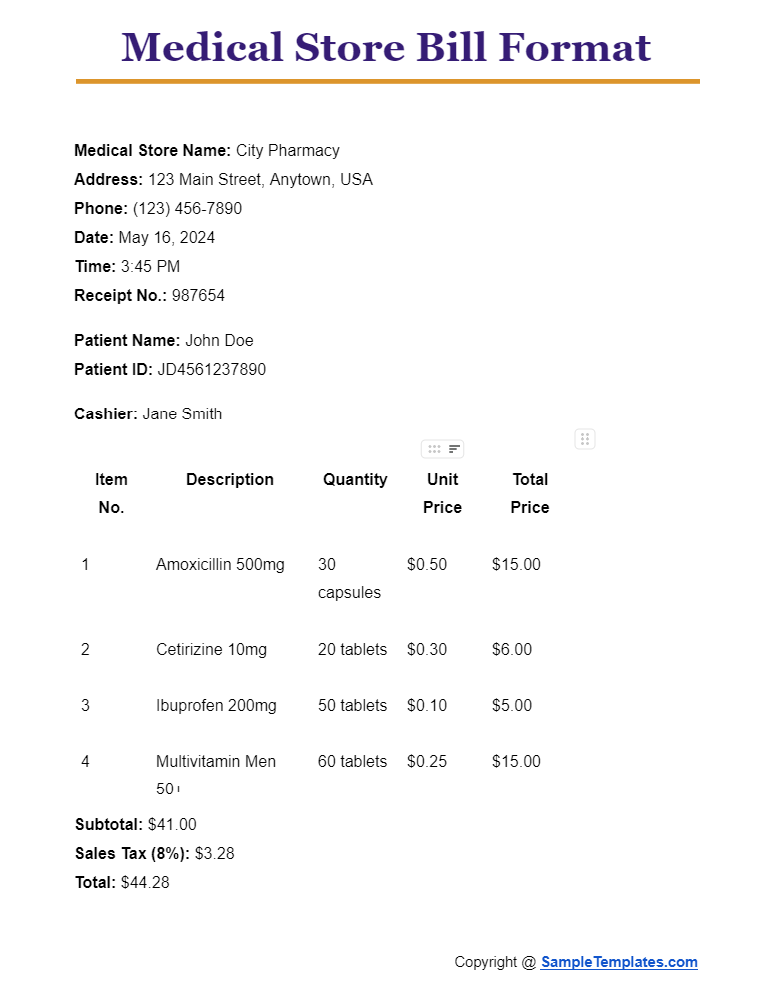
Hospital Bill Payment Receipt
Hospital Name: City Health Hospital
Hospital Address: 123 Health Avenue, Metropolis, State, Zip Code
Phone: (123) 456-7890
Date: May 16, 2024
Receipt Number: 987654321
Patient Information:
Name: John Doe
Patient ID: 001234567
Date of Birth: 01/01/1980
Address: 456 Patient Street, Anytown, State, Zip Code
Billing Information:
Bill Issue Date: May 10, 2024
Service Period: April 20, 2024 – May 10, 2024
Due Date: May 15, 2024
Payment Details:
Total Charges: $2,500.00
Amount Paid: $2,500.00
Payment Method: Credit Card
Transaction ID: 123456789ABC
Services Provided:
- Emergency Room Visit: $1,000.00
- X-Ray: $300.00
- Blood Tests: $200.00
- Overnight Stay: $1,000.00
Amount Due: $0.00
Notes:
Thank you for your prompt payment. This receipt confirms that we have received the full payment for the services provided. Please keep this receipt for your records.
If you have any questions or concerns about this receipt or the services rendered, please contact our billing department at (123) 456-7890.
Authorized Signature:
[Digital or Physical Signature]
Printed Name: Jane Smith
Title: Billing Officer
Date: May 16, 2024
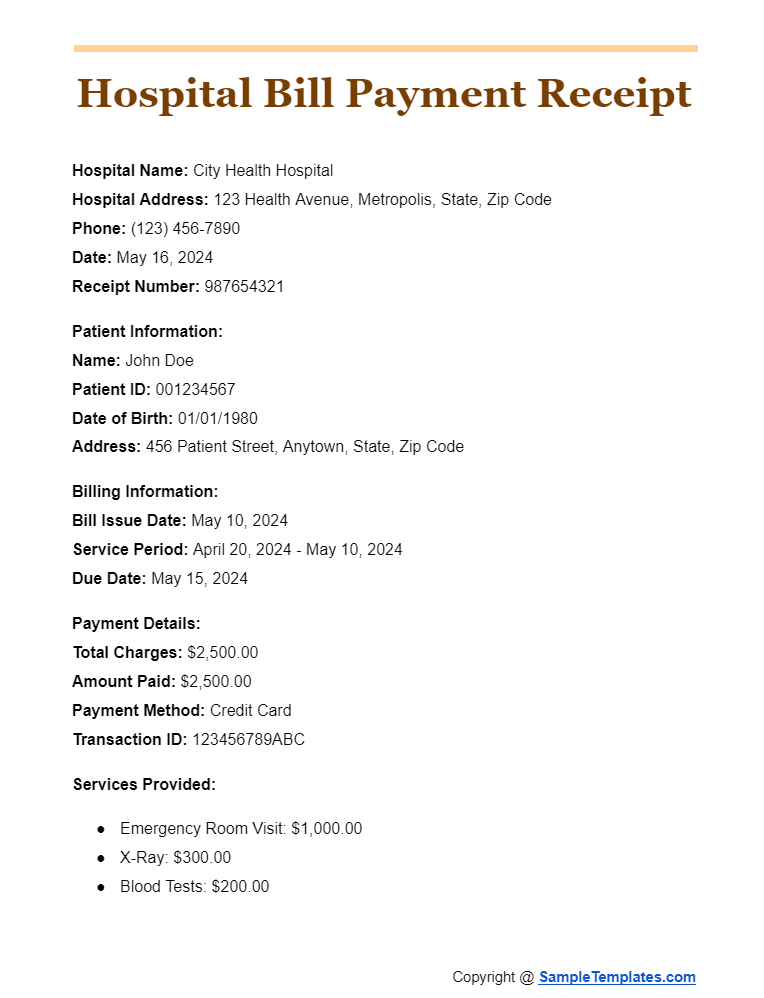
Pathology Bill
Pathology Lab Name
Lab Address Line 1
Lab Address Line 2
Phone Number
Email Address
Receipt Date: [Date]
Receipt Number: [Unique Receipt Number]
Patient Name: [Patient’s Full Name]
Patient ID: [Unique Patient Identifier]
Doctor Name: [Referring Doctor’s Name]
Date of Service: [Date of Test]
Description of Services:
| Item Number | Description | Quantity | Unit Cost | Total Cost |
|---|---|---|---|---|
| 001 | Complete Blood Count (CBC) | 1 | $50.00 | $50.00 |
| 002 | Lipid Panel | 1 | $45.00 | $45.00 |
| 003 | Thyroid Function Test | 1 | $40.00 | $40.00 |
| 004 | Urinalysis | 1 | $25.00 | $25.00 |
| 005 | Blood Glucose Test | 1 | $15.00 | $15.00 |
Subtotal: $175.00
Tax (5%): $8.75
Total Amount Due: $183.75
Payment Method: [Cash/Card/Insurance]
Amount Paid: $183.75
Balance Due: $0.00
Remarks:
- Results will be sent to the referring physician.
- Please allow 48 hours for comprehensive panels.
Lab Technician: [Technician’s Name]
Signature: _____________________
Date: [Date of Issue]
Thank you for choosing [Pathology Lab Name]. For any queries regarding this bill, please contact us at [Phone Number] or [Email Address].
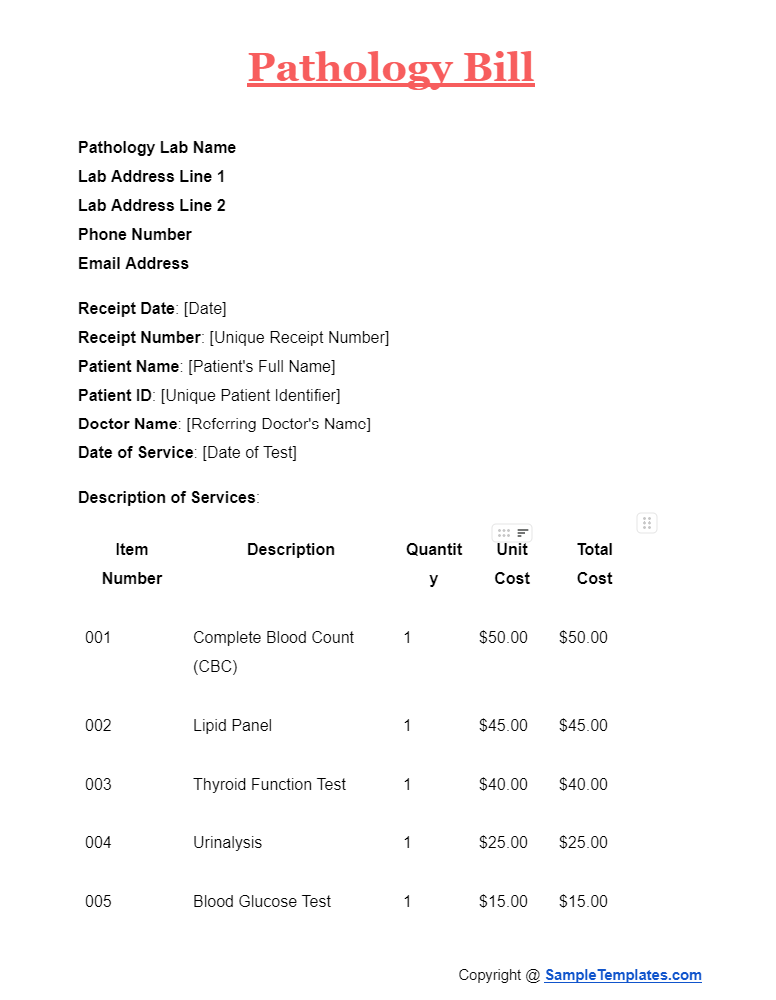
Laboratory Bill Format
Laboratory Name
Laboratory Address
Contact Information
Website (if applicable)
Bill To:
Patient Name: [Patient’s Full Name]
Patient ID: [Unique Patient Identifier]
Date of Birth: [DOB]
Address: [Patient’s Address]
Invoice Number: [Unique Invoice ID]
Date: [Billing Date]
Due Date: [Due Date for Payment, if applicable]
Description of Services:
| Test Performed | Description | Quantity | Unit Cost | Total Cost |
|---|---|---|---|---|
| CBC | Complete Blood Count | 1 | $XX.XX | $XX.XX |
| Lipid Profile | Cholesterol Test | 1 | $XX.XX | $XX.XX |
| … | … | … | … | … |
Subtotal: $[Subtotal Amount]
Discount: $[Discount Given, if any]
Tax (X%): $[Applicable Tax Amount]
Total Amount Due: $[Total Amount Due]
Payment Method: [Method of Payment]
Payment Status: [Paid/Unpaid]
Payment Date: [Date of Payment, if already made]
Notes:
[Additional information, e.g., payment instructions, terms and conditions, etc.]
Authorized Signature:
[Signature of authorized personnel]
Thank you for choosing [Laboratory Name].
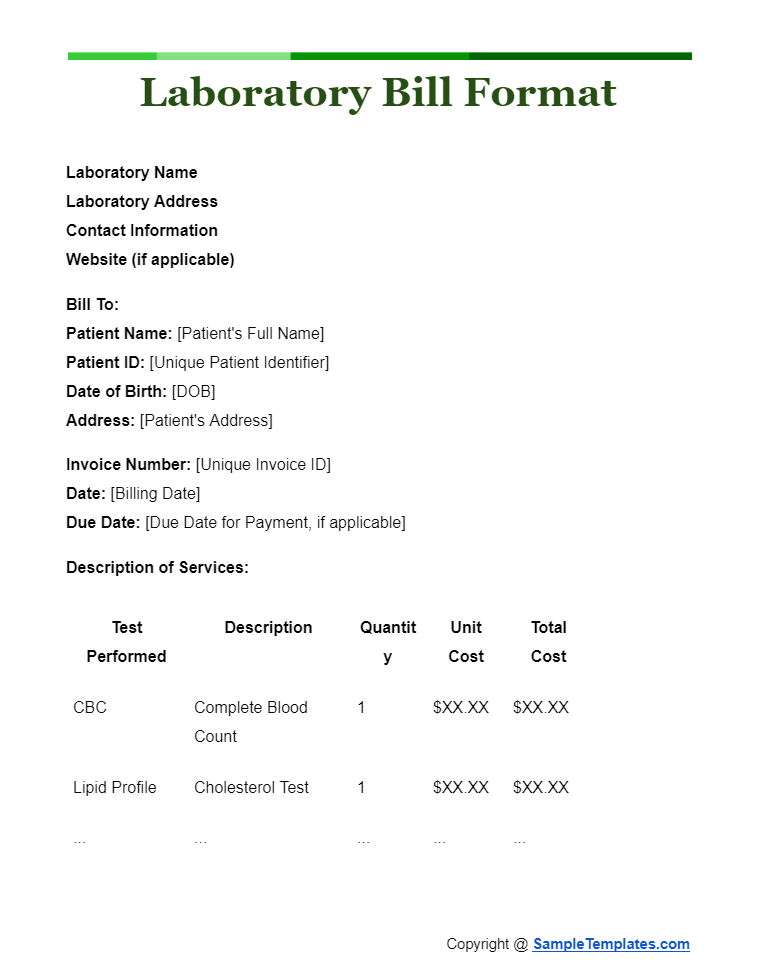
Browse More Templates On Medical Bill Receipt
Medical Bill Receipt
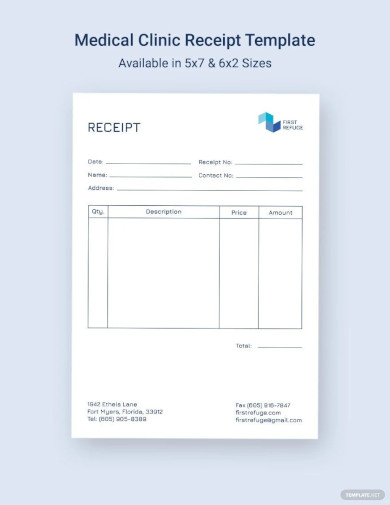
Medical Receipt Template
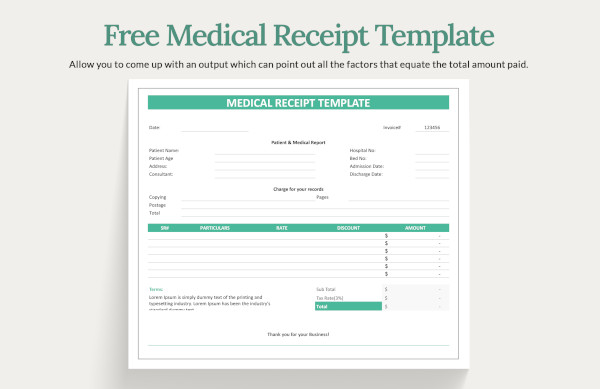
Editable Medical Bill Template PDF
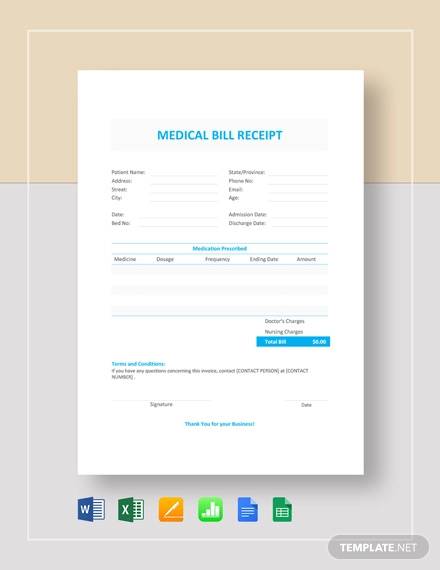
Medical Bill Format
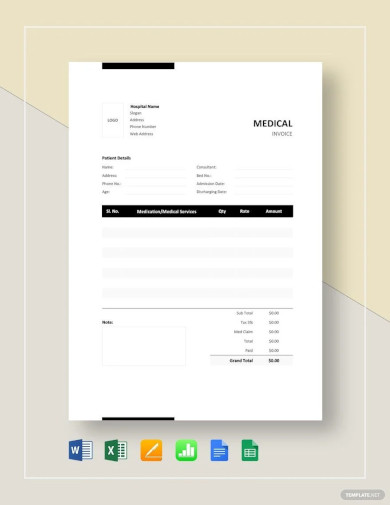
Hospital Bill Receipt
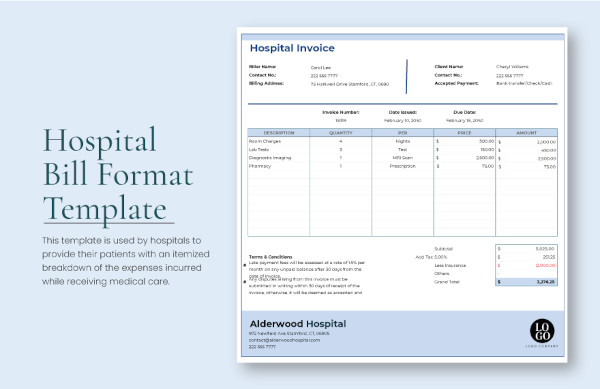
Blank Hospital Bill
What Information Should be Included in a Medical Bill Receipt?
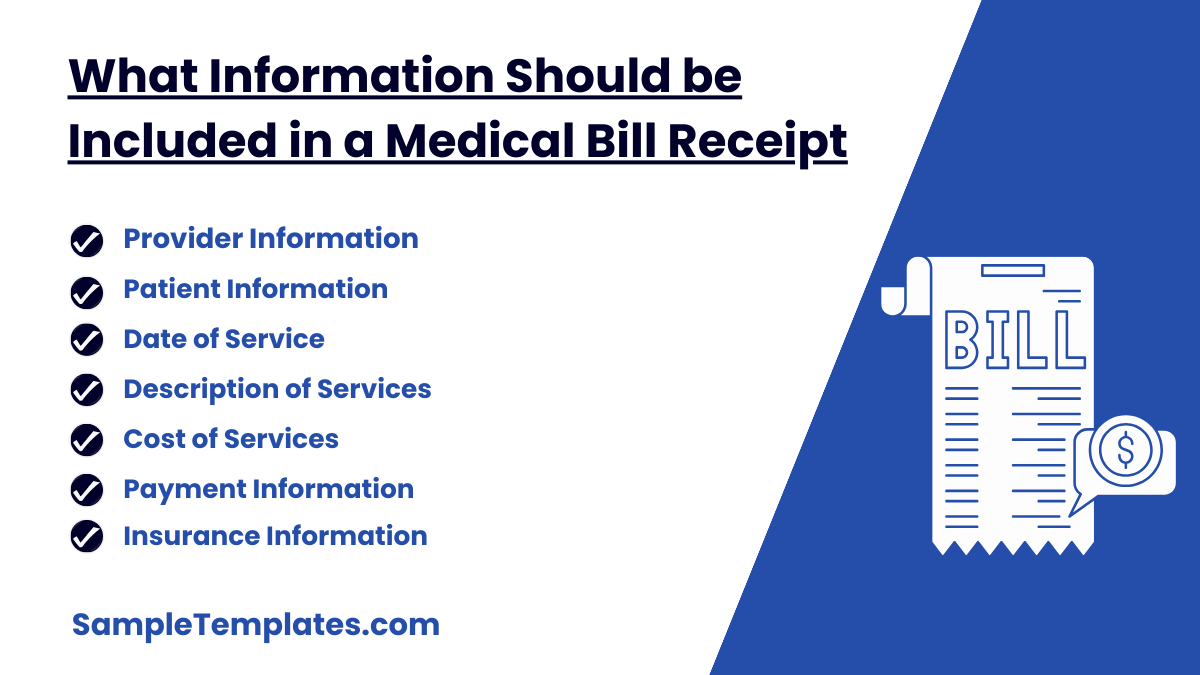
A medical bill receipt is a crucial document that provides a comprehensive record of healthcare expenses for individuals and insurance purposes. It should contain specific information to ensure accuracy and transparency. Here’s a detailed description of the key elements to include in a medical bill receipt:
- Provider Information: The receipt should start with the healthcare provider’s details, including the name, address, contact information, and any relevant identifiers, such as their National Provider Identifier (NPI) number.
- Patient Information: Include the patient’s name, date of birth, address, and contact details. This ensures the bill is correctly associated with the individual receiving the services.
- Date of Service: Clearly specify the date or date range when the medical services were provided. This helps both the patient and the payer understand the timing of the care.
- Description of Services: List each service or procedure performed, along with a detailed description. Include CPT (Current Procedural Terminology) codes, diagnosis codes (ICD-10), and any relevant modifiers.
- Cost of Services: Clearly state the cost of each service, procedure, or itemized charge. This allows patients to review and understand the expenses.
- Payment Information: Detail the payment received, including the method (e.g., credit card, insurance, or out-of-pocket), and any co-pays, deductibles, or patient contributions.
- Insurance Information: If applicable, provide the name of the patient’s insurance company, policy number, and any claim reference numbers.
- Total Amount Due: Sum up all the charges, payments, and adjustments to provide the total amount due. This is the amount the patient is responsible for paying.
- Payment Due Date: Clearly specify the due date for the outstanding balance. This is essential for timely payments and avoiding late fees or collection actions.
- Provider’s Signature and Contact Information: Include the provider’s signature or authorized representative, along with their contact information, in case the patient has questions or concerns.
- Payment Instructions: Offer guidance on how to make payments, such as accepted payment methods and where to send payments.
- Terms and Conditions: Include any relevant terms and conditions, including refund policies and dispute resolution procedures.
- Itemized Statement: For transparency, provide an itemized statement with a breakdown of each service, its cost, and any adjustments or discounts applied.
A well-structured medical bill receipt should be clear, concise, and compliant with legal and regulatory requirements. This not only helps patients understand their medical expenses but also assists insurance companies and healthcare providers in processing claims and payments accurately. It is a critical document for financial accountability and transparency in the healthcare industry.
Hospital Bill Sample PDF
Medical Receipt PDF
How Can I Obtain a Duplicate Medical Bill Receipt?
Obtaining a duplicate medical bill receipt is typically a straightforward process. Here’s a step-by-step guide:
- Contact the Healthcare Provider: Reach out to the healthcare provider or medical facility where you received the services. This is usually the hospital, clinic, or the billing department of your healthcare provider.
- Provide Personal Information: Be ready to offer essential information to confirm your identity. This may include your full name, date of birth, contact details, and, if applicable, your patient ID or medical record number.
- Specify the Bill: Clearly state which specific medical bill you need a duplicate receipt for. If you have a reference or invoice number, provide it to facilitate the process.
- Request the Receipt: Politely request a duplicate receipt, explaining why you need it. Common reasons include insurance claims, tax purposes, or reimbursement by your employer.
- Confirmation and Processing: The healthcare provider may verify your request and bill details. Once confirmed, they will process your request and generate a duplicate receipt.
- Delivery Method: Inquire about the method of delivery. The receipt may be provided in physical format, sent via email, or available for download from their patient portal.
- Review for Accuracy: Once you receive the duplicate receipt, carefully review it to ensure that all the necessary details are accurate and match the original bill.
- Store Safely: Keep the duplicate receipt in a secure place, as you may need it for various purposes, such as insurance claims, tax deductions, or future reference.
It’s essential to maintain clear communication with the healthcare provider or billing department throughout this process to ensure a smooth and timely receipt of the duplicate medical bill format. Remember that healthcare facilities and providers may have their specific procedures and timelines, so be patient and persistent if needed.
Can a Medical Bill Receipt be Requested for Insurance Purposes?
Absolutely, medical bill receipts play a pivotal role in insurance claims. They are not only requestable but often essential for insurance reimbursement or claims processing. When seeking reimbursement from an insurance company, submitting a detailed medical bill receipt is crucial. This receipt should encompass various specifics, including the patient’s information (name, address, contact details), provider details (hospital or clinic name, address, contact information), the date of service, a breakdown of the services or procedures rendered, corresponding codes (CPT or procedure codes, and ICD diagnosis codes), costs for each service, the total amount, and any payments made.
Insurance companies rely on these receipts to validate and process claims. The detailed breakdown aids in accurately assessing the services received and their costs, ensuring transparency and compliance with the sample policy’s coverage. It’s advisable to retain a copy of the original bill for personal records before submitting it to the insurance company. Requesting a copy of the medical bill receipt for insurance purposes should ideally be done directly from the healthcare provider, ensuring it meets the insurance company’s specifications. This way, it expedites the reimbursement process and reduces the chances of claim rejection due to incomplete or inaccurate information.
Doctor Bill Receipt
How to Prove you Paid a Medical Bill?
- Keep a copy of the paid bill or receipt.
- Maintain a record of the payment method used (e.g., check, credit card, bank statement).
- Retain any communication or correspondence related to the payment, such as email confirmations or canceled checks.
- If paid through insurance, keep records of your insurance claims and EOBs (Explanation of Benefits).
What Information is Crucial on a Medical Bill Receipt for Tax or Reimbursement?
A comprehensive medical bill receipt for tax or reimbursement purposes should contain specific details for accurate documentation.
Provider Information: The receipt should clearly list the healthcare provider’s name, address, and contact information.
Patient Details: It should include the patient’s name, date of service, and patient ID or account number.
Description of Services: Each service rendered, such as consultation, tests, procedures, or medications, should be itemized with corresponding dates.
Cost Breakdown: A breakdown of costs for each service provided, including fees, medications, and any additional charges.
Insurance Information: Indicate any amount covered by insurance and the patient’s responsibility for payment.
Payment Details: Mention the payment method, total amount paid, and the date of payment.
Tax ID or NPI Number: Include the Tax Identification Number (TIN) or National Provider Identifier (NPI) of the healthcare provider.
Provider’s Signature or Stamp: Some receipts may require the provider’s signature or stamp for validation.
This detailed information is crucial for tax purposes, allowing individuals to claim medical expenses accurately for deductions or reimbursements. It serves as evidence of healthcare expenses incurred and helps in validating claims for tax benefits or insurance reimbursements. Always ensure the accuracy and completeness of the information on the receipt to avoid complications during tax filing or reimbursement requests.
Medical Bill Sample PDF
Medical Receipt Format
Medical Bills PDF
What Is a Medical Bill Receipt?
The medical industry uses its own sets of receipt for all of its transaction. The format and the inclusions in such receipt vary depending on the institution using it. Medical facilities and institutions who use and issue medical bill receipts include, hospitals, clinics, outpatient care facilities, medical laboratories and many more. The details that a medical bill receipt commonly includes are the general profile of the patient, such as their name and age, type of room they are in, the list of services, laboratory tests and examinations that they have undergone, the list of medications given to them, the attending physician or physicians, date of stay and date of discharge.
Since hospital bills often get too pricey, the breakdown of everything that made up the charges must be provided in the bill so that it will be easy for the client to know and understand what they are paying for or what made the bill pricey. Medical bill receipts can also be used as reference on the laboratory tests that patients went through, aside from that of the patent’s record. Laboratory results can also be conveniently claimed by presenting the appropriate sample receipt. Records of medical bill receipts are also very useful when it comes to tracking hospital items that has been sold or used by patients or customers. For hospital or clinic owners, medical bill receipts are crucial documents to keep because just like other forms of business, these receipts will also help support the business.
There are indeed many notable uses of medical bill receipts. Other related topics you may find useful are Restaurant Bill Receipt Templates, Sample Construction Receipt Templates, and Gift Receipt Templates.
What Is the Difference Between a Receipt and an Invoice?
Receipts and invoices are two different words that most of us think are the same. Are they really? Well, you can say that they are the same in some ways, but they are really not the same. Sounds confusing? Well let’s clear things up a bit. People mistake receipts for invoice and vice versa because the contain almost the same kinds of details or information. If you see an itemized list of all the items, goods or services together with their corresponding prices, the quantity, price per unit and many more in a receipt, then you most likely will see them in an invoice. And this is mainly what confuses a lot of people. Another similarity between a receipt and an sample invoice is that they both have the total price to be paid in them. They even look identical!
So how are receipts different from invoices? They may have some things in common, but they surely have a lot of differences. Let’s start with their appearance and contents. While they may provide the same list of items, a receipt will always have receipt number written on it so that you know it is a receipt. Somewhere on the receipt, usually at the bottom, there will be a statement about it being a proof of payment receipt. Invoices have their own invoice number and does not bear any statements saying it’s a proof of purchase. That’s pretty easy to understand, right?
Moving on to the next defining factor, the mode of payment. What’s up with the mode of payment. If you have noticed, receipts always indicate the mode of payment used in the transaction. If you use cash then you will see a cash payment receipt indicated, and if you have change it record the change amount. If you paid with credit card, debit card, gift certificate or gift card, then you will the specific mode of payment used including some personal information and the last four digits of the card number. This is done so that businesses can keep track of the different payment transactions and be able to tell how much they have earned in total from cash payments, credit card payments and so on. Well, there are payment terms and conditions stated in an invoice, but you can’t tell whether the payment is done with cash or with something else.
Perhaps the easiest way for you to differentiate a receipt from that of an invoice is the time when they are issued. You will know that you are getting an invoice if it is issued before you made the payment for the products you want to purchase. An invoice is used to request for payment for the products or services that a customer wants to buy. This is the reason why you can’t see the mode of payment used for the transaction because payment has not been made yet. A receipt on the other hand is issued after payment has been made, that is why it is also referred to as a proof of payment. If you buy something in grocery stores or malls, it serves as your ticket to go out of the establishment will all the items you have purchased.
With that, you should no longer be confused as to what a receipt is and what an invoice is. If you want to learn more about receipts, you may check out related articles, like Payment Receipt Templates, Credit Card Receipt Templates, and Goods Receipt Templates.
How to Create a Simple Receipt Format for Your Business
Need a receipt for your business? Well here are some easy to follow steps that you can use to help you create one.
- Look for a receipt template or a receipt sample that you can use as your guide or as your reference for the business receipt you are making.
- Create an outline or draft of how you want your business receipt to be. Include in it the necessary parts or details that must be present in your receipt.
- Decide on how you want to make your receipt. There are various applications that you can use to do so, but the best one would be the sample application you are familiar with and one you are comfortable using.
- Then prepare the equipment that you need. This includes your laptop or computer and printer. Once your equipment is ready, launch the application that you want to use and start with a blank page.
- Set the paper size, paper orientation, paper layout as well as the margin before you start working on it.
- Start filling in the blank sheet using the templates as reference and the draft you just made. Transfer the contents of your draft to the blank sheet one a time.
- Add or remove parts or components as you see fit, but make sure to leave out the necessary cones.
- Once you are done, review your work and make sure that everything you need is in place. Also check for any spelling errors which may make your work look funny once it is actually printed.
- After making the final changes and checks, you may now save your work. Save your receipt in your desired folder with your desired file name. Then look for it in the folder where you had it saved and try to open it. If it opens then it’s all good.
The easiest way to create a receipt for your business is to make use of available templates that you can download online for free. There are a lot of options that you can choose from and they are mostly for free! You can check out more receipt samples and templates on our website, like Purchase Receipt Templates, Store Receipt Templates, and Transfer Receipt Templates.
Printable Hospital Bill Receipt
Official Receipt Sample
Bill Receipt Format
Doctor Receipt PDF
Advantages of Using Receipt
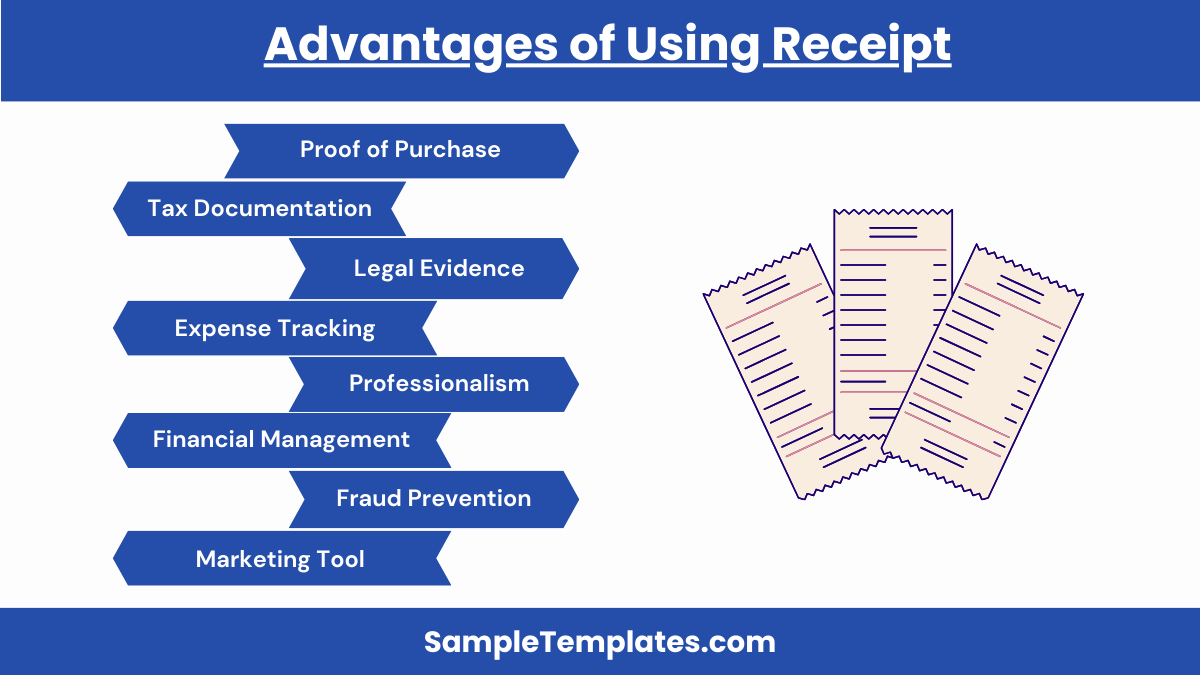
Using receipts in transactions provides several significant advantages for both businesses and consumers. Here are some of the key benefits:
- Proof of Purchase: Receipts serve as a proof of purchase for consumers. They are crucial when returning or exchanging items, claiming warranties, and verifying ownership.
- Financial Management: Receipts are essential for both personal and business accounting. They help track expenditures, manage budgets, and prepare financial statements. For businesses, they also facilitate the reconciliation of sales and cash flow.
- Tax Documentation: Receipts are vital for tax purposes. They provide documentation needed for tax deductions on business expenses, charitable donations, and medical expenses, helping to ensure accurate tax filings and potential savings.
- Legal Evidence: In case of disputes over the terms of a transaction or the quality of goods and services, receipts act as legal evidence. They can protect rights under consumer law and help in litigation cases by providing transaction details.
- Inventory Management: For businesses, receipts help in tracking inventory levels. Sales receipts update the inventory automatically, assisting in sample inventory control and planning.
- Expense Tracking: Receipts allow businesses to monitor spending patterns and operational costs. Analyzing receipts can help identify areas for cost reduction and more efficient budget allocation.
- Customer Satisfaction: Providing receipts contributes to customer satisfaction and trust. It assures customers that their transactions are recorded and can be referenced if issues arise, thus enhancing the customer service experience.
- Professionalism: Issuing receipts is considered a standard business practice, reflecting professionalism and a commitment to transparent customer service.
- Fraud Prevention: Receipts help prevent fraudulent transactions in businesses. They serve as a double-check mechanism to ensure that the recorded transactions match the actual sales or services provided.
- Marketing Tool: Receipts can be used as a marketing tool by including promotional messages, discounts for future purchases, or information about loyalty programs. This can enhance customer engagement and encourage repeat business.
Why should you use a receipt template? The answers you need are just written above. So if you still have not used a receipt template before, there is no reason for you now to use one. Not now that you already know of its many advantages. And if you need templates, you can surely find a collection of them on our website. You will truly be interested in titles, like Petty Cash Receipt Samples & Templates, Parking Receipt Samples, and Refund Receipt Samples & Templates to name a few.
What is the Doctor Bill Format?
A receipt provided by a doctor or medical practitioner for their services is commonly referred to as a “medical receipt” or “doctor’s receipt.” It itemizes the medical services provided and their associated costs, serving as proof of payment and a record for insurance claims and personal records.
How Do You Write a Medical Receipt?
- Include the doctor’s name, contact details, and medical facility.
- Add the date of the medical service.
- Specify the patient’s name and contact information.
- List the medical services provided, including descriptions and costs.
- Calculate the total amount due.
- Mention payment methods accepted.
- Include a space for the doctor’s signature.
- Print or provide a copy to the patient.
What is Medical Billing Invoice?
A medical billing invoice is a document sent by a healthcare provider to a patient or their insurance company, detailing the costs of medical services received. It includes information about the services provided, their costs, any insurance coverage, and the amount the patient is responsible for paying. This invoice is used for payment collection and insurance claims.
What is Write of in Medical Billing?
In medical billing, “write-off” refers to the portion of a patient’s medical expenses that a healthcare provider or insurance company decides not to collect or bill to the patient. It is typically the difference between the total cost of services and the amount paid by the patient’s insurance or other responsible parties. Write-offs may occur for various reasons, such as contractual agreements with insurance companies or charity care for patients in financial hardship.
What are the Benefits of Using the Doctor Bill?
- Proof of Services: It serves as proof of the medical services received.
- Insurance Claims: It’s essential for filing insurance claims for reimbursement.
- Expense Records: Helps in maintaining accurate medical expense records.
- Payment Confirmation: Provides a record of payment for the patient.
- Dispute Resolution: Can be used to resolve billing disputes and discrepancies.
What Must a Doctor Bill Contain?
- Doctor’s name, contact details, and medical facility.
- Date of the medical service.
- Patient’s name and contact information.
- Detailed list of medical services provided.
- Descriptions and costs of each service.
- Total amount due.
- Payment methods accepted.
- Doctor’s signature or provider information
In conclusion, the medical bill receipt serves as a crucial record of healthcare services received and financial transactions undertaken. It ensures transparency, accountability, and clarity regarding charges and payments, facilitating efficient reimbursement processes and aiding in financial planning. We appreciate your trust in our services and are here to address any further inquiries.
Related Posts
FREE 6+ Parking Receipt Samples in PDF | MS Word
FREE 8+ Car Payment Receipts in MS Word | PDF
FREE 8+ Loan Receipt Templates Examples In MS Word | PDF
FREE 16+ Printable Hotel Receipt Templates in PDF | MS Word
FREE 6+ Sample rent receipt form in MS Word | PDF
FREE 10+ Sample Receipt Voucher Templates in PDF | MS Word
FREE 10+ Fee Receipt Samples in PDF | MS Word | Google Docs | Excel | Apple Numbers | Apple Pages
FREE 7+ Vehicle Sales Receipt Samples in MS Word | PDF
FREE How to Create a Car Rental Receipt [9+ Samples]
FREE 13+ Taxi Receipt Templates in PDF | Google Docs | Google Sheets | Excel | MS Word | Numbers | Pages
FREE 10+ Receipt Book Samples in PDF
FREE 10+ Online Receipt Samples in MS Word | Google Docs | Google Sheets | MS Excel | PDF
FREE 10+ Personal Analysis Samples in MS Word | Google Docs | Pages | PDF
FREE 5+ Non Profit Receipt Samples in PDF
FREE 10+ Advance Receipt Samples in PDF | DOC


